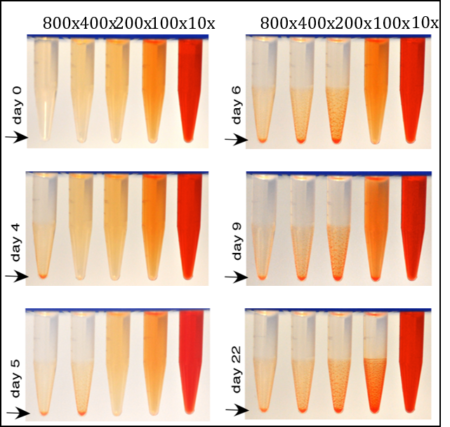It is commonly true that a diluted colloidal suspension is more stable over time than a concentrated one, because dilution reduces collision rates, so delays formation of aggregates. However, we observed the opposite relationship between stability and concentration for some engineered ligand-coated nanoparticles.
Because the stability of NPs determines their physicochemical and kinetic behavior including toxicity, dilution induced instability needs to be understood to realistically predict the behavior of engineered ligand-coated nanoparticles in aqueous systems.
Summary
It is commonly true that a diluted colloidal suspension is more stable over time than a concentrated one, because dilution reduces collision rates of the particles, therefore delays formation of aggregates. However, this generalization does not apply for some engineered ligand-coated nanoparticles (NPs). We observed the opposite relationship between stability and concentration of NPs. We tested four different types of NPs; CdSe-11-mercaptoundecanoic acid, CdTe-polyelectrolytes, Ag-citrate, and Ag- polyvinylpirrolidone. The results showed that dilution alone induced aggregation and subsequent sedimentation of the NPs that were originally monodispersed at very high concentrations. Increased dilution caused NPs to progressively become unstable in the suspensions. The extent of the dilution impact on the stability of NPs is different for different types of NPs. We hypothesize that the unavoidable decrease in free ligand concentration in the aqueous phase following dilution causes detachment of ligands from the suspended NP cores. The ligands attached to NP core surfaces must generally approach exchange equilibrium with free ligands in the aqueous phase, therefore ligand detachment and destabilization are expected consequences of dilution. More studies are necessary to test this hypothesis. Because the stability of NPs determines their physicochemical and kinetic behavior including toxicity, dilution induced instability needs to be understood to realistically predict the behavior of engineered ligand-coated nanoparticles in aqueous systems.
Citation
Wan, J., Y. Kim, M.J. Mulvihill, and T. K. Tokunaga (2018). Dilution destabilizes engineered ligand-coated nanoparticles in aqueous suspensions. Environmental Toxicology and Chemistry. doi: 10.1002/etc.4103.

